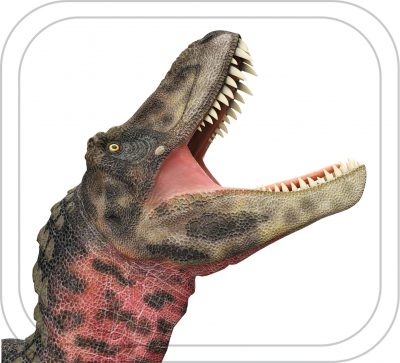Tarbosaurus
Name: Tarbosaurus
Pronounced: TAR-bow-SORE-us
Meaning: ‘Alarming lizard’
Period: Late Cretaceous (74 – 70 million years ago)
Group: Theropods (beast feet)
Size: It was approximately 10m long and between 4.6m – 5.5m tall. It weighed approximately 6000kg.
Diet: Carnivore
Characteristics: The Tarbosaurus walked on two legs and is similar in size and shape to the Tyrannosaurus. Its front limbs have two fingers. The largest known Tarbosaurus skull is more than 1.3 meters long. Extensive studies of their skulls show they have a unique locking mechanism in the lower jaw and sixty large teeth. Making plaster casts of the insides of some of the skulls has enabled palaeontologists to observe the shape of this dinosaur’s brain. The position of some of the cranial nerve roots suggests it had a keen sense of smell and good hearing. The studies also showed it had a good sense of balance and coordination. Its skull was narrow and its eyes faced primarily sideways. This suggests it relied more on its senses of smell and hearing than on its eyesight.
Named by: Evgeny Maleev in 1955
Discovery: In 1946, a joint Soviet-Mongolian expedition to the Gobi Desert in the Mongolian Ömnögovi Province discovered the first Tarbosaurus skull and some vertebrae in the Nemegt Formation.

